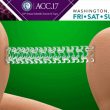Courtesy of Dr. Javier Castro. Certain coronary lesions have been historically discouraged for endovascular treatment. Among these can be found left main coronary artery lesions, multivessel disease, and proximal anterior descending artery lesions. As a matter of fact, the latter is actually considered separately as a criterion for choosing the revascularization method. Endovascular treatment of...
DECISION-CTO: Prevailing Questions on CTO Rechanneling
The first and only randomized trial on chronic total occlusion (CTO) revascularization versus optimal medical therapy in stable patients has disappointed interventional cardiologists. According to Dr. Seung-Jung Park, who presented the study, evidence suggests that optimal medical therapy is a reasonable initial treatment strategy for chronic total occlusion, when compared with angioplasty. Critics...
ABSORB III: More Events with Absorb Than With Xience at Two Years
The two year outcomes of ABSORB III, presented at the scientific sessions of the American College of Cardiology 2017, have shown the bioresorbable scaffold Absorb GT1 (BVS, Abbott Vascular) was associated with increased risk of target vessel failure, compared against the everolimus eluting stent Xience. At 25 months, target vessel failure occurred in 11%...
SYNERGY vs. XIENCE in Complex Real-World Patients
Courtesy of Dr. Guillermo Migliaro. Technological advancements in drug-eluting stents (DES) have shown significant improvement as regards the safety and efficacy of these devices. DES are considered to be the golden standard for the treatment of percutaneous coronary interventions. DES with permanent or durable polymers (DP) have been associated with local inflammatory reactions and...
Left Main Target Lesion Revascularization: When is it Necessary?
Courtesy of Dr. Agustín Vecchia. Incidence, predictors and impact of target lesion revascularization (TLR) on unprotected left main stenosis initially treated with second generation DES have not yet been clearly defined and this is the main goal of the present study. This is a multicenter observational retrospective study of patients with unprotected left main...
Why We Should Use IVUS in Complex Coronary Lesions
Courtesy of Dr. Carlos Fava. Drug eluting stents (DES) have shown benefits in terms of restenosis vs. conventional bare metal stents (BMS). Many of the advantages of DES depend on correct implantation, especially in complex lesions. In complex lesions, the use of intravascular ultrasound (IVUS) provides important information on lesion length, vessel diameter, calcification...
Zotarolimus with Durable Polymer vs. Biolimus with Biodegradable Polymer
The present work compared the safety and efficacy of the permanent polymer zotarolimus eluting stent vs. the biodegradable polymer biolimus eluting stent in unselected coronary artery disease patients. The biodegradable polymer biolimus eluting stent resulted superior to the first generation durable polymer stent in long term randomized studies. However, little evidence supports this superiority...
New Generation of DES already being tested, so far safe
This study evaluated the safety and efficacy of the new drug eluting stents (Medtronic, Santa Rosa, California) to treat de novo coronary lesions. These new polymer free drug filled stents have the potential to improve clinical outcomes and allow a shorter dual antiplatelet therapy. In addition, they have been made with three layers of continuous...
Left Main Coronary Artery Angioplasty vs. Surgery: A Large Meta-Analysis
Courtesy of Dr. Carlos Fava. Around 5% of patients undergoing coronary angiography present severe left main coronary artery (LMCA) lesions. Myocardial revascularization surgery (MRS) is the preferred method for this group, although there is evidence from different randomized trials demonstrating the safety and efficacy of unprotected LMCA angioplasty, with results similar to those obtained through the traditional strategy....
More Evidence For Left Main PCI
Courtesy of Dr. Carlos Fava. Left main coronary artery disease (LMD), has historically been treated with myocardial revascularization surgery (CABG), but for some years now, and with the development of new drug eluting stents (DES), percutaneous coronary intervention (PCI) has been gathering support in this challenging territory. The study analyzed the SYNTAX and PRECOMBAT...









